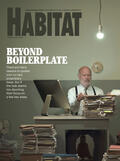HABITAT
Greenwich Village Co-op Saves 80% on Winter Bills with VRF Heat Recovery Units
Emily Myers in Bricks & Bucks
Waverly Mews is looking forward to pocketing some big savings when winter comes. The 120-unit co-op in Greenwich Village is expected to slash its winter heating bills by 80% by swapping its old baseboard heating for variable refrigerant flow (VRF) heat recovery units — a system that uses heat-pump technology to provide both heating and cooling, but has the added ability to recover and reuse heat that would otherwise be lost. “Not only can the system simultaneously heat and cool the building, but it can extract heat from one area and give it to another,” says Sina Jasteh, founder of Efficiti, the energy and engineering consultancy firm behind the project.
The old baseboard heating uses an electric element to heat rooms in winter. In summer, shareholders currently rely on in-window air-conditioning units for cooling. In addition to doing double duty heating and cooling, the new heat exchange units will allow more climate control and more light into apartments by removing the need for in-window ACs. Based on efficiency data from the manufacturer, shareholders can expect savings of up to 30% on summer cooling costs thanks to the new system.
The hefty cost-cutting is welcome news for shareholders — a mix of longtime residents on fixed incomes and newer, more affluent ones — some of whom have been forking over $1,000 per month to meet their winter electricity bills. “Clearly, we need to move beyond wasting energy and money like that,” says board president Sasha Soroudi. The co-op currently has a D energy efficiency grade, and reducing emissions and lowering energy costs were an important driver for the project.
The work at the six-story building involves installing more than a dozen heat pumps on the roof, each serving multiple apartments. VRF heat recovery units typically allow for a more balanced system so when south-facing apartments are hot on cool days, the refrigerant in the pipes can recover heat and exchange it to different lines in the building to heat colder north-facing apartments in winter. “If it’s a really balanced operation, the fans on the roof units don’t even come on because they’re so efficient at transferring the heat,” Jasteh says.
The building is expected to have enough electricity to power the new system. “The baseboard heating it already has uses a lot of power,” Jasteh explains. While electrical capacity isn’t a primary concern, one of the anticipated challenges includes getting access to apartments to complete the work. The board is hoping to minimize inconvenience to residents by routing the piping through common areas, with the time spent in each apartment focused on mounting the indoor units and thermostats.
The project comes with a price tag north of $2 million, and the board hopes successful applications for Con Edison and NYSERDA incentives will cover a significant portion of the cost. To pay the balance, the co-op is using a combination of reserve funds and a credit line from its mortgage lender. Efficiti is also helping the board explore project financing options from other lenders. “Having a variety of financing alternatives helps us calibrate how much financial burden our economically diverse community shoulders upfront versus over time,” Soroudi says. The work is expected to be completed before the end of the year.



